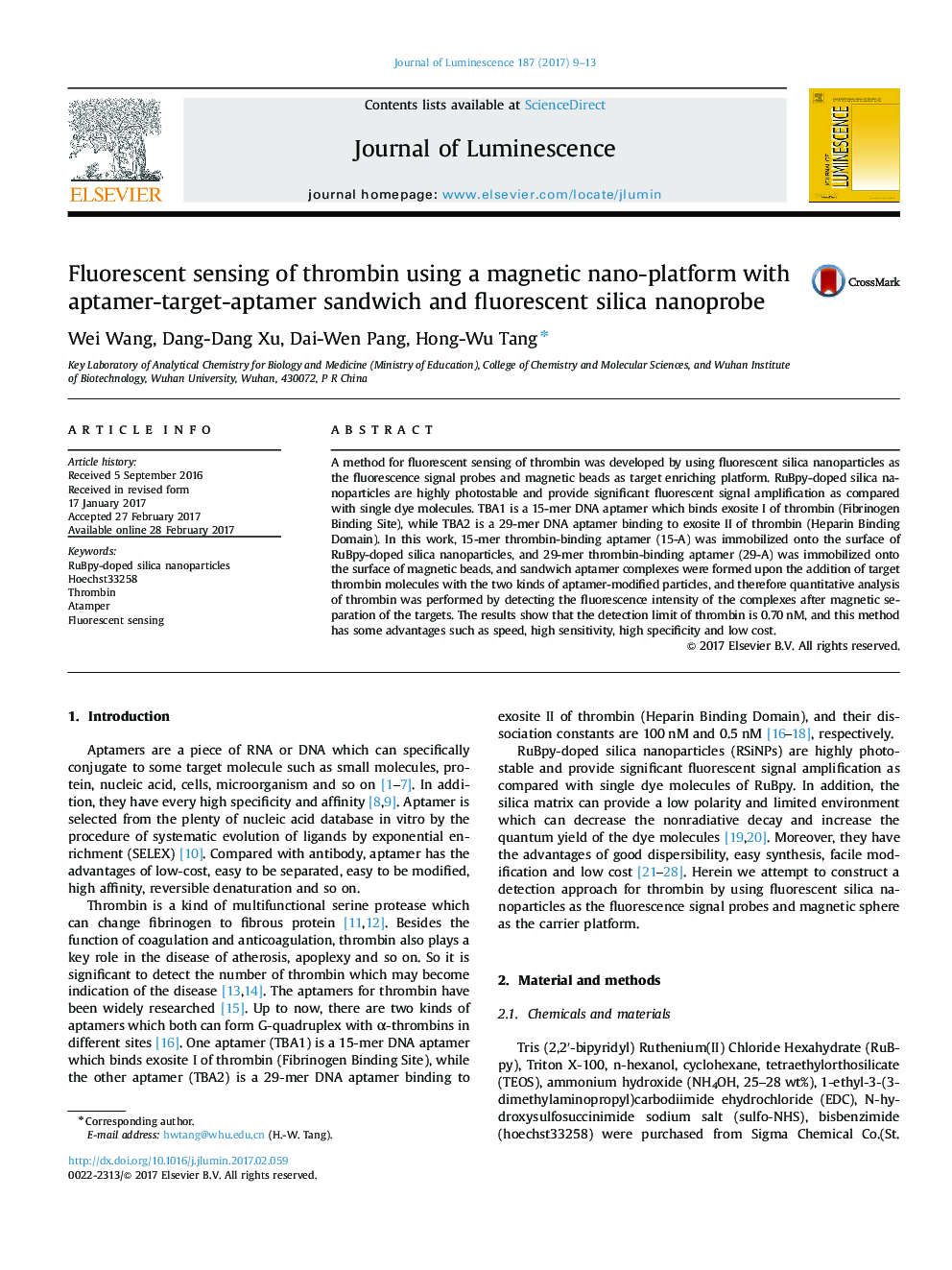| Article ID | Journal | Published Year | Pages | File Type |
|---|---|---|---|---|
| 5397871 | Journal of Luminescence | 2017 | 5 Pages |
Abstract
A method for fluorescent sensing of thrombin was developed by using fluorescent silica nanoparticles as the fluorescence signal probes and magnetic beads as target enriching platform. RuBpy-doped silica nanoparticles are highly photostable and provide significant fluorescent signal amplification as compared with single dye molecules. TBA1 is a 15-mer DNA aptamer which binds exosite I of thrombin (Fibrinogen Binding Site), while TBA2 is a 29-mer DNA aptamer binding to exosite II of thrombin (Heparin Binding Domain). In this work, 15-mer thrombin-binding aptamer (15-A) was immobilized onto the surface of RuBpy-doped silica nanoparticles, and 29-mer thrombin-binding aptamer (29-A) was immobilized onto the surface of magnetic beads, and sandwich aptamer complexes were formed upon the addition of target thrombin molecules with the two kinds of aptamer-modified particles, and therefore quantitative analysis of thrombin was performed by detecting the fluorescence intensity of the complexes after magnetic separation of the targets. The results show that the detection limit of thrombin is 0.70Â nM, and this method has some advantages such as speed, high sensitivity, high specificity and low cost.
Related Topics
Physical Sciences and Engineering
Chemistry
Physical and Theoretical Chemistry
Authors
Wei Wang, Dang-Dang Xu, Dai-Wen Pang, Hong-Wu Tang,
